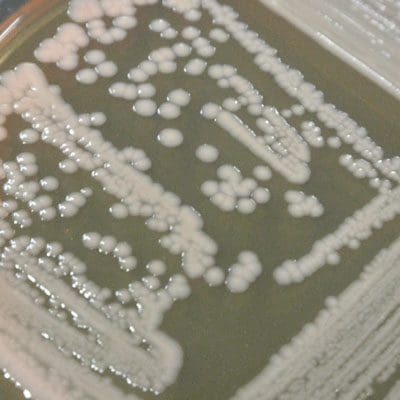
Get A Testing Quote
Enterobacter aerogenes
Structure and Physiology
This bacteria is Gram-negative, rod-shaped, and radially surrounded by flagellum. It can be found in dairy products, soil, and the gastrointestinal tract of animals. E. aerogenes is closely related to a wide range of other common microorganisms including Escherichia, Klebsiella, Shigella, and Serratia.
Transmission and Disease
This bacteria can be involved in urinary tract, gastrointestinal, and bloodstream infections and is implicated as a potential cause of adult meningitis. Because of the germ’s emerging multi-drug resistance and prevalence in nosocomial infections, it has been grouped as an ESKAPE pathogen (Enterococcus, Stapylococcus, Klebsiella, Acinetobacter, Pseudomonas, and Enterobacter species).
Disinfection
Because of its common association with human illness, E. aerogenes is frequently used as a benchmark for disinfectant efficacy.
Notes
It has been shown that E. aerogenes is multi-drug resistant to antibiotics due to its method of removing the harmful substances via efflux pumps and protein channels, which are not specific to any one compound.
Reference
- Pradel, Elizabeth, and Jean-Marie Pagès. “The AcrAB-TolC efflux pump contributes to multidrug resistance in the nosocomial pathogen Enterobacter aerogenes.” Antimicrobial agents and chemotherapy 46.8 (2002): 2640-2643.
Share

